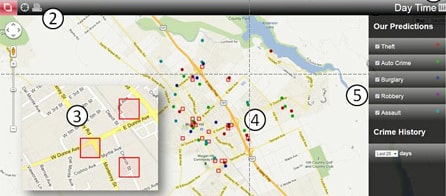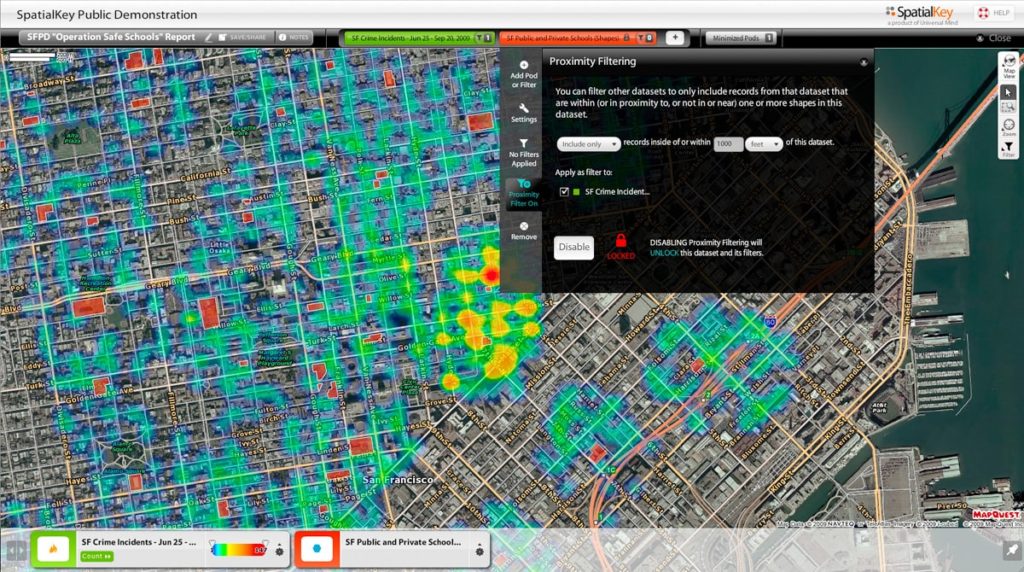The American Police Officers Alliance Police Technology series continues with an exploration of predictive policing technology. In the first of a two part series, we’ll explain what “predictive policing” is and how it works, with a follow up on the impact it’s had on crime in the communities where it is deployed and what’s next for this technology.
If you’ve seen or even heard of the movie Moneyball then you’ve heard of Big Data and advanced analytics, new tools that are being used to increase efficiencies and performance. That movie showed how a Major League Baseball team with a smaller budget than other teams used data analysis to try and outsmart their competitors. They would predict which players would perform best in the future. This technique, used by the Oakland A’s, inspired Craig Uchida, a criminologist who worked with Sean Malinowski and Jeff Brantingham of the Los Angeles Police Department (LAPD) to create one of the nation’s first systems for forecasting criminal activity. Add to the adoption of that kind of analysis two other developments: more powerful computer processing combined with more affordable computers and you have many private and public sector organizations trying to get a leg up on their most difficult problems with predictive technology. The LAPD has been using their Operation LASER since 2011 and more than 60 police departments are using some form of predictive policing currently.
What is it?
Law enforcement agencies that use predictive policing consider it not only a technology, but also a process. Though to understand it, it helps to first look at the technology. The tool consists of software that takes data and analyzes past criminal activity to anticipate where future crimes will take place. This analysis can look like maps of crime hotspots, or reports that show relationships between a perpetrator’s past criminal activity, crimes locations, and any information that would help track that person down such as past known residences. Examining these relationships are nothing new to police, but these tools can take a process that use to require multiple database lookups and manual labor to print and map out connections, and speed it up so that data is presented to police almost instantly with daily or even hourly updates.

The key to the analysis is an algorithm which takes the data and makes forecasts. Each tool has their own algorithm, a mathematical formula that makes connections between data. Some are original, some are built on algorithms used by NASA and weather forecasters. Examples of algorithms used in this way in everyday civilian life include Netflix’s movie recommendations and Amazon’s shopping recommendations. In predictive policing, these algorithms make calculations of what will happen based on what has happened. The computer analysis can forecast locations and times with high crime risk or individuals at risk of committing crimes. It can also provide methods for matching past offenders with past crimes to identify them or it can predict which groups or individuals are at high risk for being victims.
The software takes the data, analyzed by algorithms, and creates reports for law enforcement officers, who then decide what actions to take. This is where the process beyond the technology comes into play.
How does it work?
Beyond the technology, predictive police really works as a four part process that informs police of decisions that need made. This process consists of:
- Data collection
- Analysis
- Intervention
- Criminal response
Data
The entire process begins with the collection of data with criminal activity as the foundation of data for predictive policing. While that data is already available to any police department, historically law enforcement agencies have been slowed down by the need to use multiple databases. For instance, one for criminal history of an individual, another for that individual’s traffic violations, another for that individual’s residential information, and so on. An advantage of predictive policing tools is to create a single point of access for all data collected by law enforcement agencies. Beyond criminal activity, additional data that can influence crime or environments have in some instances been added including medical, school, and land use data. It’s important to point out that some predictive policing systems. For example, PredPol is one of the most widely used, only use data for crime type, location, and time/day to avoid using any demographic, ethnographic, or socio-economic data to address concerns over civil rights violations.
Analysis
Using the algorithms previously described, the predictive policing tools make their forecasts. Some prefer PredPol and another tool, CrimeScan, which predicts where crimes will occur and presents maps with red boxes or hotspots. Other tools, like the Strategic Subject List which is used by the city of Chicago, predicts who will most likely be involved in shootings either as a perpetrator or a victim.
Intervention
Based on the analysis presented, law enforcement officers need to decide what intervention to apply to the situation. Interventions sit on a scale from broad to specific with broad interventions requiring the fewest resources, but focused interventions tailored to specific crimes getting better results. Broad interventions include deploying more resources to high risk areas, intermediate responses include crime-specific interventions, and focused interventions include addressing individual locations and factors that increase crime risk. While the data crunching can be automated, only humans can decide how to apply it to real world situations.
Criminal Response
The fourth part of the process is the criminal response to measure the effectiveness of intervention. Criminal activity will have been impacted by the interventions and the tools collecting criminal activity data will capture this. As the tools continue to feed the predictive policing systems, the impact will show up in the analysis such as reduction in size or number of criminal activity hotspots on the map.
What’s next?
Predictive policing has been welcomed by many departments and PredPol celebrated it’s 7th “birthday” recently. We hope this explanation on what it is and how it works helps you understand one of the newer and increasingly adopted tools that police departments are using to enforce the law and protect communities. Please come back next month to see the impact on crime in the communities where it is used and the methods of measuring impact.
Image Credit: SpatialKey








